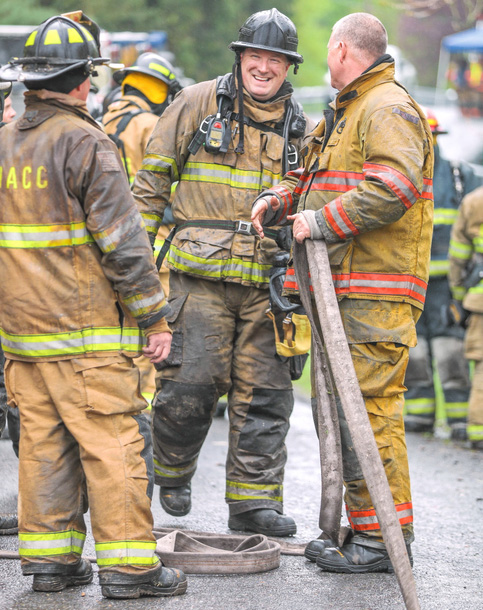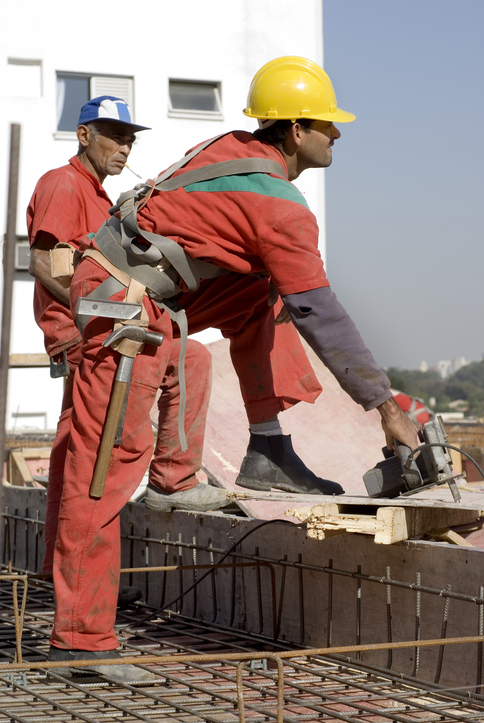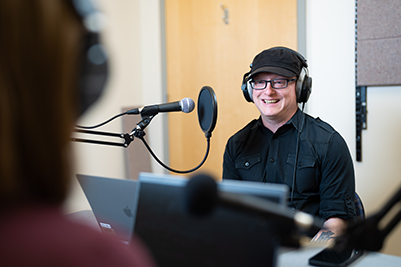Oregon Healthy Workforce Center project impacts

The Oregon Healthy Workforce Center (OHWC) is a National Institute for Occupational Safety and Health (NIOSH) Center for Excellence in Total Worker Health®. The work we do--science, education and outreach--supports the health and wellbeing of workers in Oregon and beyond.
We conduct research to better understand the health and wellbeing-related challenges associated with work and the workplace. We work with partners and practitioners to transform research findings into evidence-based tools and resources designed to improve worker safety, health and wellbeing using the Total Worker Health approach.
Our impacts
Workplace Safety Climate
Investigator: Emily Huang, Ph.D.
Project timeline: In progress
The Workplace Safety Climate study seeks to develop a measurement tool that provides critical information to organizations leading to lower injury rates and workers’ comp claims and higher job satisfaction.
Impacts:
- Implemented at 16 Oregon companies, surveying nearly 4,000 workers
- Utilized by SAIF Corporation to scientifically validate the Ansbro Safety Culture Spectrum

Shiftwork in Firefighters
Investigator: Nicole Bowles, Ph.D.
Project timeline: In progress
Shiftwork in firefighters is a study designed to examine cardiovascular risk factors, wellbeing, health behaviors and safety by work schedule type.
Impacts:
- Analyzed subjective alertness to determine how alertness improve on 1/3/2/3 shift schedule
- Noted decreased performance with less sleep, more night call, more days on duty

Work-life check-ins: A Total Worker Health supervisor-driven burnout intervention
Investigators: David Hurtado, Sc.D., Abigail Lenhart, M.D.
Projet timeline: In progress
The Work-life check-ins study is designed to address elevated levels of burnout in the healthcare industry. The intervention study is testing the effectiveness of brief, periodic confidential meetings between leaders and team members.
Impacts:
- Participants reported improvements in pain outcomes
- Participants reported improvements in burnout and workplace cohesion factors
- Participants reported improvements in manager support and mental health outcomes

Total Worker Health® Education
Partnership
Professional development opportunities through the Oregon Total Worker Health Alliance, a state-wide partnership between the Oregon Institute of Occupational Health Science, Oregon OSHA, and SAIF, we provide training to organizational practitioners in the region.
Impact:
- Delivered to over 1,500 occupational health, safety and wellness practitioners in Oregon.

Workplace mental health training for managers
Investigator: Leslie Hammer, Ph.D.
Project timeline: Available for commercial use
The Workplace mental health training for mangers is an evidence-based training program that aims to promote employee mental health, recognize warning signs and reduce mental health riskfactors such as anger and loneliness.
Impacts:
- Over 2,000 training seats licensed by external organizations
- Adopted by nine Oregon state agencies
- Available to over 45,000 Oregon state employees.

Active workplace study
Investigator: Brad Wipfli, Ph.D.
Project timeline: 2016-2021
The Active workplace study developed a toolkit to help reduce sitting time at work and to provide training to help managers and supervisors better support workplace safety, health and wellbeing for their employers.
Impact:
- The intervention reduced sedentary time and musculoskeletal pain while increasing physical activity in the short-term.
- Available in English and Spanish languages

Tech4Rest
Investigators: Ryan Olson, Ph.D.; Peter W. Johsnon, Ph.D.
Project timeline: 2016-221
The Tech4Rest study combined an enhanced cab intervention that utilized a therapeutic matress system and active suspension seat to reduce vibrations during truck driver sleeping periods along with a behavioral sleep intervention to improve sleep for truck driving teams.
Impacts:
- Improved sleep for truck drivers
- Improved physical activity for truck drivers

Safety and health improvement program (SHIP)
Investigators: Leslie Hammer, Ph.D.; Donald Truxillo, Ph.D.
Project timeline: 2011-2016
The Safety and health improvement program (SHIP) is a supportive supervisor training for Oregon construction workers to improve their health, safety and wellbeing by supporting work-life demands and reducing stress.
Impacts:
- Decreased workers' blood pressure and improved perceptions of team effectiveness and work-life balance
- Deployed as a ready-to-use program for employers
- Distributed by SAIF, Oregon's workers' compensation insurance organization
- Available in the State of Oregon's learning management system for use by state employees

Community of practice and safety support (COMPASS)
Investigator: Dr. Ryan Olson
Projet timeline: 2011-2016
The Community of practice and safety support (COMPASS) program was developed to prevent injuries and advance the health and wellbeing of home care workers.
Impacts:
- COMPASS participants significantly improved their safety behaviors, and physical and mental health
- The Oregon Home Care Commission program adopted COMPASS
- Available to 60% of home care workers in Oregon
- 651 home care workers completed the training
- Training available in multiple languages

BeSuper! In Construction
Investigator: Kent Anger, Ph.D.
Project timeline: 2011-2016
BeSuper! In construction was a Total Worker Health training intervention wherein construction supervisors completed computer-based training and self-monitoring activities on team building, work-life balance, and reinforcing targeted behaviors.
Impacts:
- Improved blood pressure, sleep and health behaviors, supportive supervisor behaviors and team cohesion
- Developed into a ready-to-use program for employers

Want to learn more about the impacts of OHWC work?
Check out the OWHC 2024 Annual Report to learn even more about the exciting NIOSH-supported work at the Center.
Learn more about our work

Newsletter
Explore professional development opportunities, the latest updates from the Oregon Healthy Workforce Center and the Occupational Public Health Program, a research snapshot, and upcoming occupational health-focused events.

Blog
The Oregon and the Workplace Blog features the latest from OccHealthSci research, professional development opportunities, and valuable insights from disciplines associated with occupational health, safety, and well-being.

Podcast
The What's Work Got to Do with It podcast, produced by OccHealthSci, brings together occupational health, safety, and well-being experts to discuss the latest topics relating to worker health, well-being, and safety in Oregon and beyond.